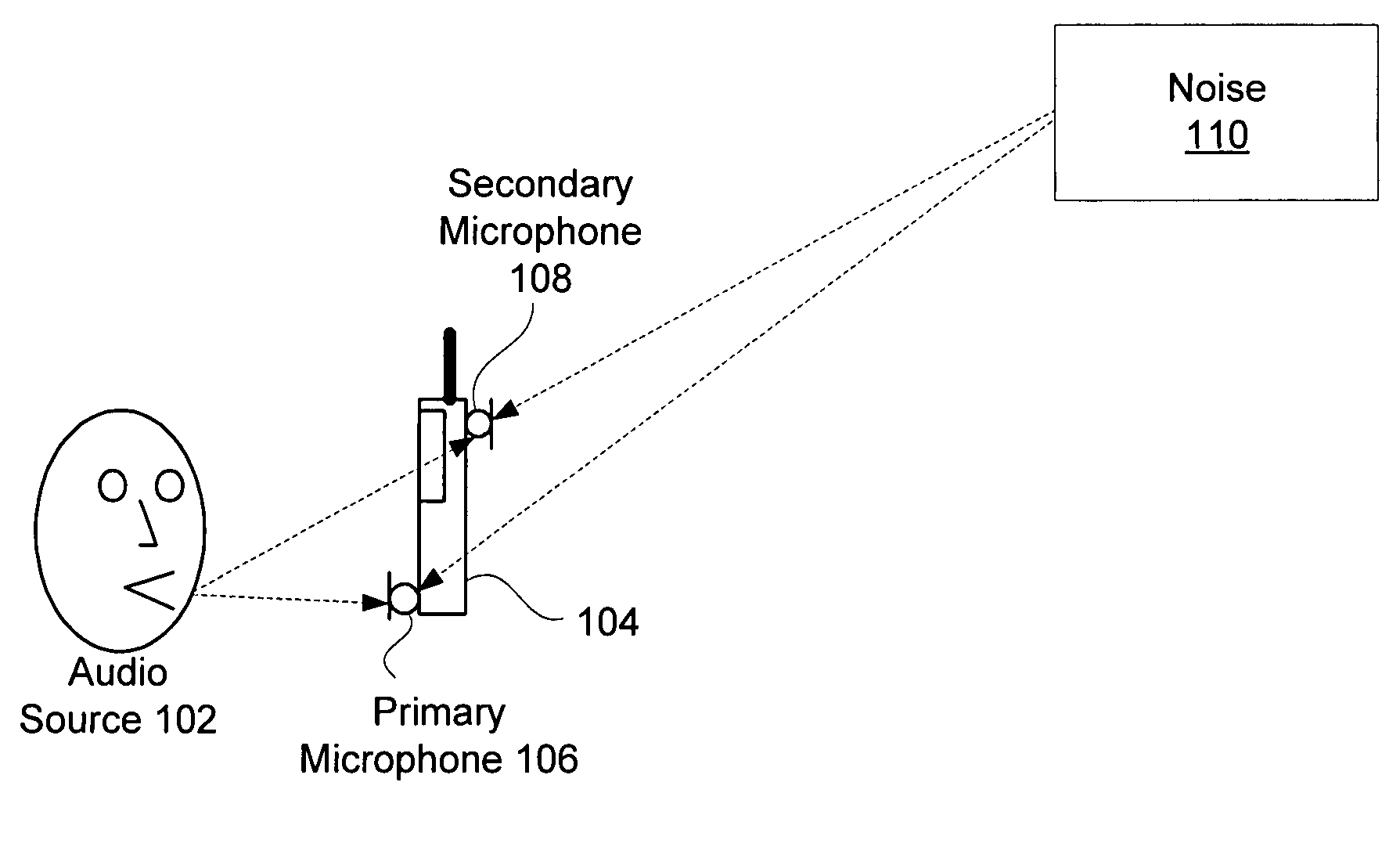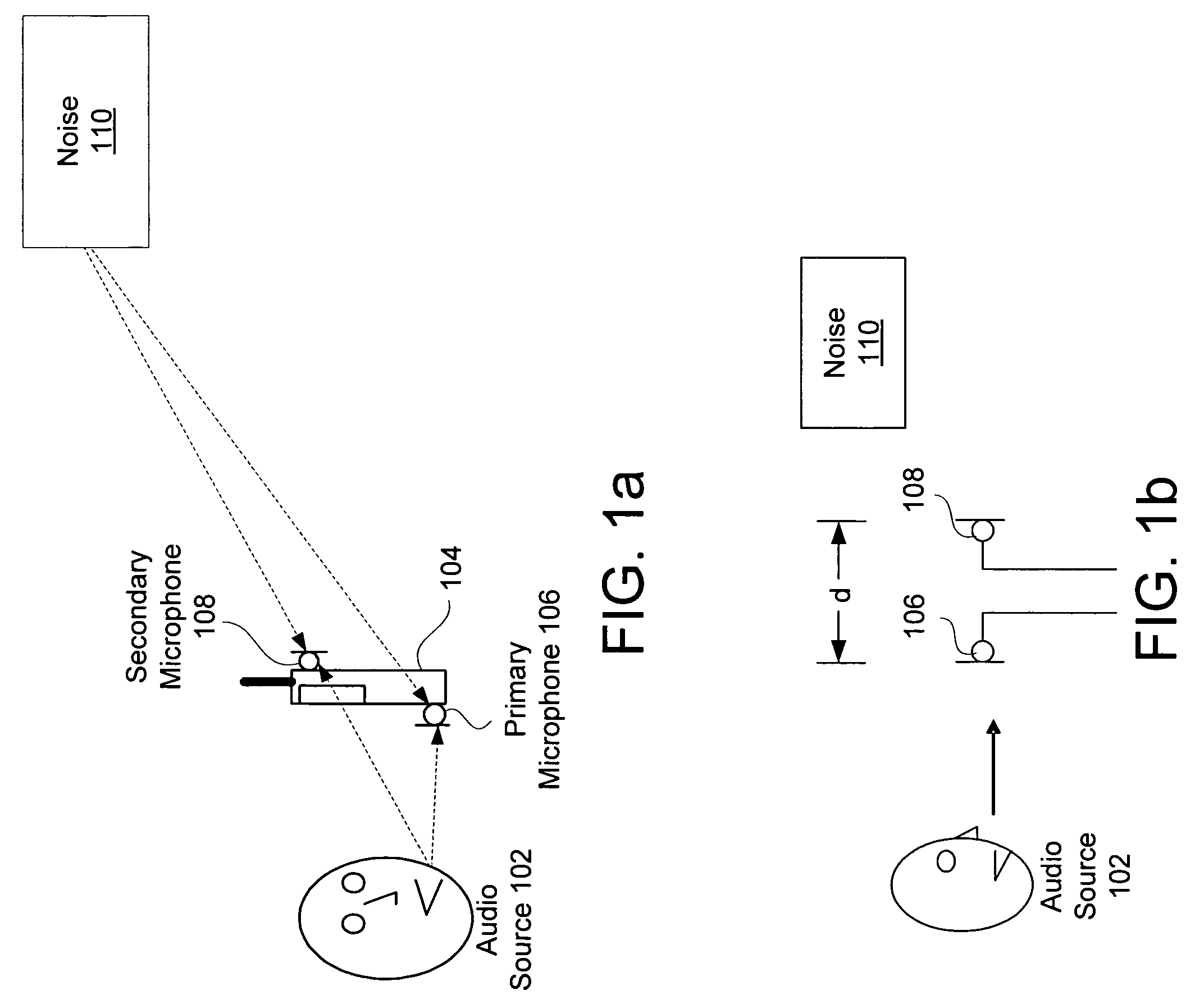System and method for utilizing omni-directional microphones for speech enhancement
a technology of omni-directional microphones and speech enhancement, applied in the field of audio processing, can solve the problems of difficult mounting of directional microphones, large size of directional microphones, and numerous physical drawbacks, and achieve the effect of enhancing speech and suppressing unwanted sound sources
- Summary
- Abstract
- Description
- Claims
- Application Information
AI Technical Summary
Benefits of technology
Problems solved by technology
Method used
Image
Examples
Embodiment Construction
[0023]The present invention provides exemplary systems and methods for utilizing inter-microphone level differences (ILD) of at least two microphones to identify frequency regions dominated by speech in order to enhance speech and attenuate background noise and far-field distracters. Embodiments of the present invention may be practiced on any audio device that is configured to receive sound such as, but not limited to, cellular phones, phone handsets, headsets, and conferencing systems. Advantageously, exemplary embodiments are configured to provide improved noise suppression on small devices and in applications where the main audio source is far from the device. While some embodiments of the present invention will be described in reference to operation on a cellular phone, the present invention may be practiced on any audio device.
[0024]Referring to FIG. 1a and FIG. 1b, environments in which embodiments of the present invention may be practiced are shown. A user provides an audio ...
PUM
 Login to View More
Login to View More Abstract
Description
Claims
Application Information
 Login to View More
Login to View More - R&D
- Intellectual Property
- Life Sciences
- Materials
- Tech Scout
- Unparalleled Data Quality
- Higher Quality Content
- 60% Fewer Hallucinations
Browse by: Latest US Patents, China's latest patents, Technical Efficacy Thesaurus, Application Domain, Technology Topic, Popular Technical Reports.
© 2025 PatSnap. All rights reserved.Legal|Privacy policy|Modern Slavery Act Transparency Statement|Sitemap|About US| Contact US: help@patsnap.com



